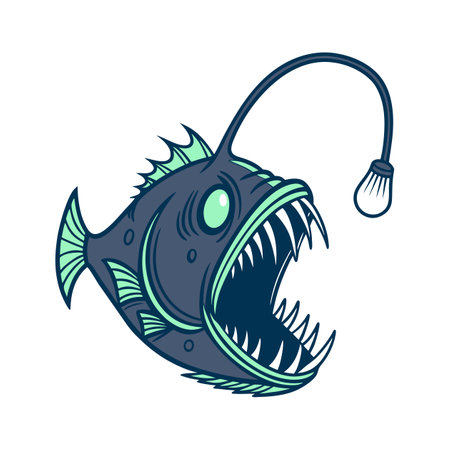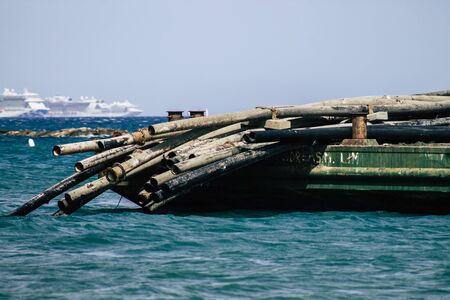Introduction to Drift Fishing in the UK
If you’ve ever fancied a spot of fishing that combines the thrill of the open sea with a dash of British unpredictability, drift fishing might just become your new favourite pastime. Across the UK’s stunning coastal waters—from Cornwall’s wild Atlantic edges to the sheltered inlets of Northumberland—drift fishing is a beloved angling technique that keeps both beginners and seasoned fishers hooked. But what exactly is drift fishing? In simple terms, it’s letting your boat float naturally with the wind and tide, allowing your bait or lure to cover more ground (or water, rather!) as you go. Unlike static anchor fishing, you’re always on the move, which means there’s never a dull moment—or a soggy sandwich.
So why has drift fishing captured the hearts of British anglers up and down the country? Well, for starters, our diverse coastlines are teeming with species from mackerel and pollock to cod and bass, making every trip an adventure. Plus, the ever-changing British weather adds an element of surprise; one minute you’re basking in rare sunshine, the next you’re bracing against a classic seaside drizzle. There’s also something uniquely British about embracing whatever the sea throws at you—with a thermos of tea and a sturdy waterproof jacket, of course!
What really sets the UK apart as a prime spot for drift fishing is its mix of sheltered bays, dramatic headlands, and tidal currents that create perfect conditions for this style of angling. Whether you’re drifting off the Welsh coast or exploring Scottish lochs, each region offers its own quirks and local knowledge. It’s no wonder that drift fishing remains such a popular way to experience Britain’s rich maritime heritage—and maybe land yourself a cracking tale for your next pub visit.
Essential Gear for Drift Fishing
If you’re keen to try your hand at drift fishing along the UK coastline, having the right kit can make all the difference between a cracking day out and going home empty-handed. Here’s a quick guide to the must-haves, sprinkled with some top tips from local anglers and tackle shops.
Rods, Reels & Rigs: What You’ll Need
| Gear | Recommended Specs | Why It Matters |
|---|---|---|
| Rod | 8-10ft boat or lure rod, medium action | Gives you enough backbone for big fish, but still sensitive for bites |
| Reel | 4000-6000 size fixed spool or multiplier | Plenty of line capacity and smooth drag for battling UK species |
| Main Line | Braid (20-30lb) or strong mono (15-20lb) | Braid is popular for its sensitivity and minimal stretch—ideal in tidal waters |
| Rigs | Running ledger, sliding float rigs, or simple paternoster setups | Covers a range of target fish and lets your bait move naturally with the drift |
| Weights & Leads | Assorted bombs (2-6oz), pear leads, and grip leads for stronger tides | Helps keep your rig on the sea bed or at the perfect depth as you drift along |
| Hooks & Traces | Size 1/0–4/0 hooks; fluorocarbon or wire traces for toothy critters like tope or bass | Covers most UK coastal species—from bream to cod and pollack |
Tackle Shop Wisdom: Local Knowledge is Gold Dust!
Don’t be shy about popping into a local tackle shop before heading out—they know what’s working that week (and what isn’t). Whether it’s a particular colour of lure or a tip on where mackerel are running, their advice can give you an edge. Plus, you’ll often find locally-made rigs tailored to nearby marks—always worth a punt!
Dress for Success: British Weather-Proofing Essentials
- Waterproofs: A decent set of breathable waterproofs is a lifesaver when those infamous British showers roll in.
- Layer Up: The coastal breeze can be fresh even in summer; thermal base layers and a fleece won’t go amiss.
- Grippy Boots: Decks get slippery fast—non-slip soles are your best mate here.
- Sun Protection: Don’t forget your sunnies and SPF! Even on cloudy days, the glare off the water can catch you out.
Your Drift Fishing Checklist at a Glance:
| Essentials Kit List |
|---|
| Rod & reel combo (boat/lure style) |
| Main line (braid/mono) |
| A selection of rigs and weights/leads |
| A box of assorted hooks & traces |
| A net or gaff (where permitted) |
| Pliers and scissors for quick rig changes |
| A sturdy tackle bag or box—preferably waterproof! |
| Sensible clothing for all weathers (waterproofs, thermals, hat) |
| Sunscreen & sunglasses (trust us on this one) |
| A flask of tea—because it’s Britain! |
Final Word on Gear Prep
The right gear will help you adapt to changing conditions—a hallmark of fishing around these shores. So whether you’re drifting over sandbanks for flatfish or skirting rocky marks after bass, being well-prepped means more time with your line in the water…and hopefully more stories to tell down the pub later!

3. Perfecting Drift Fishing Technique
Drift fishing along the UK coast is all about adapting to the ever-changing British weather and sea conditions. To help you master this classic technique, here’s a step-by-step guide tailored for our local shores—whether you’re casting off from Cornwall or braving the North Sea.
Step 1: Assess the Conditions
Before you even drop a line, take a good look at the weather, tides, and wind direction. In the UK, weather can turn on a sixpence, so keep an eye out for sudden changes. Use local tide charts and check wind forecasts (the Met Office app is your friend!) to determine your best window for a productive drift.
Step 2: Position Your Boat
Once afloat, position your boat up-tide or up-wind of your chosen mark. Let the natural movement of tide and wind carry you across likely fish-holding ground like sandbanks, reefs, or wrecks—prime hotspots for species such as bass, cod, and pollack.
Common British Coastal Features Worth Drifting Over:
| Feature | Target Species |
|---|---|
| Sandbanks | Bass, flatfish |
| Rocky Reefs | Pollack, wrasse |
| Kelp Beds | Coleys, ling |
| Wrecks | Cod, conger eel |
Step 3: Choose the Right Tackle and Rig
Select weights and rigs suited to water depth and drift speed. Heavier leads are needed when tidal flow is strong—a common occurrence around British headlands. The classic running ledger rig is a staple; if in doubt, ask at your local tackle shop for advice specific to your stretch of coast.
Recommended Rig Types:
| Rig Type | Best For |
|---|---|
| Running Ledger Rig | Bass, cod in mixed ground |
| Paternoster Rig | Flatfish over sandbanks |
Step 4: Work with the Elements
Lower your bait smoothly to the seabed and maintain contact—let the drift do most of the work. In choppier waters (common off the Welsh and Scottish coasts), use shorter rods for better control. Adjust your line regularly to avoid snags and stay tight to any bites.
Top Tip:
If you feel a tap or see your rod tip nodding, strike decisively but not too hard—our coastal species often mouth baits before taking them properly.
Step 5: Repeat and Refine Your Drift
If you hit a shoal or snag a decent fish, motor back up-tide and repeat your drift over the same patch—it’s often where more fish will be lurking! Each pass gives you a chance to tweak your approach based on how fish are biting that day.
4. Choosing the Best Locations Around the UK Coast
If you’re keen to get the most out of drift fishing in the UK, knowing where to drop your line is half the battle won! Our beautiful coastline offers a cracking range of spots – each with their own quirks and character. Let’s take a breezy tour from the rugged Cornish coast right up to the wild Northumberland shores, and I’ll share some tips on how to read tides and seabeds in true British fashion.
Top Drift Fishing Spots Around the UK
| Location | Why It’s Brilliant | Target Species |
|---|---|---|
| Cornwall (Falmouth Bay) | Sheltered waters, lively reefs, loads of bait fish – perfect for big predators. | Pollack, bass, mackerel |
| Dorset (Chesil Beach) | Miles of shingle with changing depths; great for experimenting with drifts. | Bream, dogfish, plaice |
| Kent (Thanet Coast) | Tidal flows attract shoals; easy access from piers and boats. | Cod, whiting, rays |
| Northumberland (Druridge Bay) | Wild beaches and rocky gullies make it a prime spot for adventurous anglers. | Flatfish, coalfish, codling |
Reading Tides and Seabeds: The British Way
Understanding our famously unpredictable UK tides is crucial. A classic tip? Check local tide timetables (you can grab a pocket-sized one at most tackle shops or newsagents). For drift fishing, aim to start your session about an hour before high or low tide—this is when fish are most active and moving closer to shore.
Tide Tips:
- Spring tides: Offer stronger currents and wider feeding windows. Great for covering more ground during your drifts!
- Neap tides: Milder currents mean you can target smaller, trickier species hugging the seabed.
Reading the Seabed:
The British coastline is a mix of sandbanks, shingle patches, kelp forests and rocky outcrops. Look for changes in water colour—darker patches often mean weed beds or rocks where fish hide. Local anglers will tell you: “Follow the gulls!” If you spot birds diving, there’s likely bait fish below…and bigger fish not far behind.
Handy Hint:
If you’re not sure where to start, pop into a seaside pub or tackle shop—the locals are usually happy to point out their favourite marks (just don’t ask for their secret spot!). With a bit of patience and curiosity, you’ll soon be reading our quirky British coastlines like an old pro.
5. Fish Species to Target
If you’re keen on drift fishing around the UK coast, knowing which fish are likely to bite makes your day out even more rewarding. The British shoreline boasts a diverse range of species, each with its own preferred habitat and season. Here’s an easy guide to some of the most commonly caught fish while drift fishing in the UK—plus a few local tips on when and where to find them.
Top Drift Fishing Catches
| Species | Best Months | Preferred Locations |
|---|---|---|
| Mackerel | June–September | South & West Coasts, open water shoals |
| Bass | May–October | Sandy bays, estuaries, rough ground |
| Pollack | All year (best in spring/summer) | Rocky outcrops, wrecks |
| Cod | October–March | Deeper waters off the east coast, wrecks |
| Flatfish (Plaice, Dab) | April–September | Sandy bottoms, shallow banks |
Mackerel Madness
If you’re after fast action and plenty of bites, summer mackerel runs are legendary all around the south and west coasts. Keep an eye out for seabirds diving—they’re a sure sign the mackerel are feeding near the surface.
Bass Bonanza
Bass are highly prized by UK anglers. Try drifting over sandy or mixed ground at dawn or dusk in late spring through early autumn. Estuaries can be hotspots on the flood tide—just remember local minimum size limits!
Pollack & Cod Adventures
For something a bit beefier, target pollack and cod around reefs and shipwrecks. Pollack are active year-round but really come alive in spring and summer; cod favour colder months, especially along the North Sea coast.
Local Know-How
Your best bet for specific spots? Chat with local anglers or tackle shops—they’ll have up-to-date info on what’s biting and where. Whether you’re aiming for a fry-up of flatfish or hoping for that trophy bass, knowing your target species ups your chances of coastal success!
6. British Drift Fishing Tips for Success
If you want to truly master drift fishing in the UK’s coastal waters, it pays to fish like a local and embrace a bit of British spirit! Whether you’re heading out solo or joining a friendly group, here are some practical tips and cultural insights to help you make the most of your day on the water.
Local Etiquette: Fish Like a True Brit
Drift fishing is as much about camaraderie and respect as it is about landing a whopper. Brits appreciate politeness and patience—so always greet other anglers with a friendly “Alright?” or “Morning!” Keep your gear tidy and avoid encroaching on someone else’s patch. If in doubt, don’t be afraid to ask for advice; locals are usually happy to share their favourite spots or let slip what bait has been working. And of course, leave no trace: pack out all rubbish and respect wildlife.
Thinking Like a Local Angler
To really blend in, adopt a flexible mindset and be ready for the famously changeable British weather. Bring layers—a waterproof jacket is essential even on sunny mornings. Don’t forget a flask of strong tea or coffee (milk, no sugar is very British!), and maybe a cheeky sausage roll. UK anglers tend to favour patience over flashy gear, so focus on reading the water conditions and tides rather than showing off shiny new kit.
Solo vs Group Drift Fishing: Making the Most of Your Day
| Fishing Solo | Joining a Group |
|---|---|
| – Enjoy peaceful reflection – Set your own pace – Focus on perfecting technique |
– Socialise and swap stories – Learn from experienced locals – Share costs (boat hire, bait) |
| – More flexibility with location – Great for personal challenge – Time to observe wildlife |
– Friendly competition – Safer in unpredictable weather – Shared meals and brews |
No matter how you fish, remember that part of the fun is soaking up the atmosphere: chat with other anglers at the local tackle shop, stop for fish & chips after your session, and snap plenty of photos of those dramatic UK coastlines. With these tips in mind, you’ll soon be drifting like an old hand—and perhaps even picking up a few local expressions along the way (“jammy” if you land something big!). Good luck and tight lines!
7. Conclusion: Embracing the Adventure
Drift fishing along the UK’s diverse coastline isn’t just a pastime—it’s an adventure that blends skill, patience, and a touch of British eccentricity. Whether you’re casting off from the rugged cliffs of Cornwall or gliding over the lively waters of the North Sea, each outing offers something new to discover. The sense of camaraderie among local anglers, the thrill of feeling a bite on the line, and the fresh sea air all combine to create memories that last well beyond the day’s catch.
Ready to dive in? Don’t be shy—share your own drift fishing tales and tips with fellow enthusiasts! Every story adds to the rich tapestry of British angling culture. Maybe you’ve uncovered a top spot near your village or have a quirky gear hack to make life easier on choppy days. Whatever your experience, your voice is part of what makes this tradition uniquely British.
Why Drift Fishing in the UK Stands Out
| Aspect | What Makes It Unique? |
|---|---|
| Diverse Species | From mackerel to pollack, there’s always a surprise waiting at the end of your line. |
| Scenic Locations | Breathtaking coastlines, historic harbours, and plenty of secret coves. |
| Community Spirit | Warm welcomes and friendly banter down at the local tackle shop or pier. |
| Tradition & Innovation | A blend of time-honoured methods and modern kit keeps things fresh. |
Savouring Every Moment
No matter if you’re a seasoned angler or just giving it a go for the first time, drift fishing in Britain is about more than just landing fish—it’s about embracing adventure in true British style. So pack your waterproofs, grab your favourite rod, and get out there. The next great story—or legendary catch—could be yours. Tight lines!


